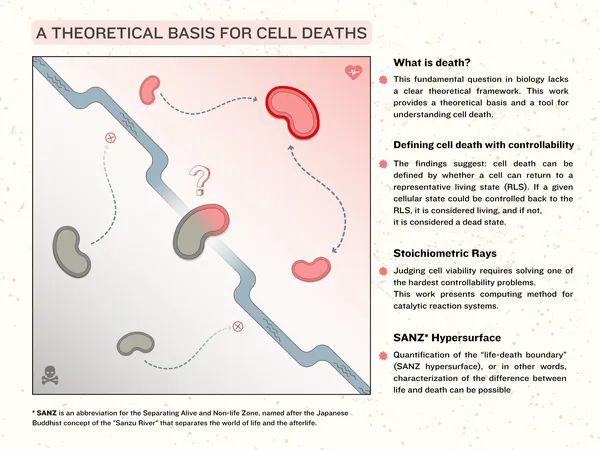
Groundbreaking Research Offers Mathematical Insight into Cell Death!
2024-11-27
Author: Liam
Research Overview
In a groundbreaking development, researchers at the University of Tokyo have proposed a mathematical framework for defining cellular death, a concept that has long eluded the biological sciences due to its complex nature. This innovative approach sheds light on the fundamental differences between life and death at the cellular level, and could have significant implications for medical research and biological applications.
Importance of Defining Cellular Death
Cellular death is a critical process that occurs in all life forms—animals, plants, and even single-celled organisms. Despite its universal nature, the lack of a standard mathematical definition for cellular death can hinder scientific progress, especially when it comes to understanding various biological processes and their health implications.
The Research Team
Assistant Professor Yusuke Himeoka from the Universal Biology Institute and his team tackled this challenge. Their research focuses on whether a cell, once deemed "dead," can return to a "representative state of living," which is a state that is unmistakably classified as alive. This perspective redefines death by considering the potential for cells to recover, thus refining our understanding of life and death from a mathematical standpoint.
Scientific Goals
Himeoka stated, “My long-term scientific goal is to understand the inherent difference between life and nonlife mathematically. Our aim in this project was to develop a mathematical definition and computational method to delineate the life-death boundary.”
Methodology
To achieve their goal, the researchers utilized enzymatic reactions within cells to define dead states—those from which cells cannot revert to an apparent living state, regardless of the biochemical processes at play. They introduced a method termed "stoichiometric rays," which quantifies this boundary by examining biological reaction systems in the context of the second law of thermodynamics, which describes how systems evolve from ordered to disordered states.
Implications for Medical Research
The implications of this research are vast. By employing these new computational methodologies, scientists could gain a deeper understanding of cellular death, potentially manipulating and even reversing the process in laboratory settings. This advancement could revolutionize medical treatments for various diseases that involve cell death, including neurodegenerative disorders and cancer.
Limitations Acknowledged
However, Himeoka acknowledged the limitations of their approach: “This method is not applicable to autonomic systems that govern cellular machinery, which is a hallmark of living organisms. My ambition is to refine this method to encompass these systems as well.”
Broader Implications of Understanding Death
The researchers highlight that while we often see death as a finality, their findings suggest it could be more nuanced and under our control than previously thought. Himeoka elaborated: “If we can better manage the processes leading to death, it could transform our understanding of life and society at large. In this sense, comprehending death goes beyond science; it has profound social implications.”
Conclusion and Future Directions
This revolutionary research, now published in *Physical Review Research*, opens a new avenue for exploration in both biology and medicine, challenging conventional notions of life and death while paving the way for innovative therapeutic strategies.









 Brasil (PT)
Brasil (PT)
 Canada (EN)
Canada (EN)
 Chile (ES)
Chile (ES)
 España (ES)
España (ES)
 France (FR)
France (FR)
 Hong Kong (EN)
Hong Kong (EN)
 Italia (IT)
Italia (IT)
 日本 (JA)
日本 (JA)
 Magyarország (HU)
Magyarország (HU)
 Norge (NO)
Norge (NO)
 Polska (PL)
Polska (PL)
 Schweiz (DE)
Schweiz (DE)
 Singapore (EN)
Singapore (EN)
 Sverige (SV)
Sverige (SV)
 Suomi (FI)
Suomi (FI)
 Türkiye (TR)
Türkiye (TR)